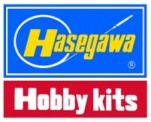The1992 FW14b was a development of the previous years car. Designed by Adrian Newey it had several technical advances added to the already superb aerodynamics of the FW14. A 3.5Ltr Renault V10 engine was mated to the Williams 6speed, longitudinally mounted, semi-automatic gearbox was improved, as was computer aided traction control, an the active ride height system was applied and even antilock breaking for some races. In the hands of Nigel Mansell the FW14B was dominant. Starting the season with 5 straight wins the title was wrapped up with a record 9 wins.
Although he preferred the passive suspension FW14 Ricardo Patrese won the Japanese GP in his FW14b and backed up Mansell in second place on six occasions. All this proved the car was far better than the next best McLaren MP4/7. Williams were clear winners of the constructors' championship with 164 points over second placed McLarens 99.
Williams' dominance that year was emphasised at the British Grand Prix qualifying session which saw Mansell a whole 2 seconds faster than his teammate Patrese, who was in turn a second faster than anyone else.
In the race Patrese got a better start than Mansell and led into the first corner. By Hanger straight he was waving Mansell past and Mansell, even during the pit stop phase, was never headed again. Another Williams 1-2 and Mansell moved onto 28 wins, one ahead of Jackie Stewarts previous most wins by a British driver record of 27.
Most of the technology on the FW14b was subsequently banned by the FIA leaving it one of the most technologically sophisticated and advanced racing cars ever built.
1/24th scale kit.
Built by Ian.

Built in the late 1990s this model is the culmination of around 5 years of learning. Ian added as much detail as references could be found for. It took around 6 months to build.
While the Hasegawa kit is basically very good it did have one problem area. They simply upgraded the 1991 FW14 kit by including some new nose and front wing parts and changing the decals. What they forgot to change was the suspension! The 1992 FW14b ran with computer controlled active ride, no springs or dampers, so all this system had to be scratch built along with some of the electronics.
All manner of wire was pressed into service to detail the car, along with items from the now rapidly growing after market suppliers like white metal hose ends and photo-etched pull handle for the electric cut off.
Carbon fibre decals were becoming available but Ian was not that impressed with them. Although they have improved no end over the last 10 years they still have a tendency to look over scale. Ian’s preferred method of replicating carbon fibre was to spray the parts satin black then give them a light dusting with gunmetal. This gives just enough shimmer to suggest the light being reflected from the weave in different directions without looking like over scale stripes or checkers.
The body is sprayed with Halfords car paints, white, yellow then blue. The colours were chosen to match the decals. It may not be the perfect team colours but having different shades between the body and decals looks far more unrealistic than a degree or two off in the main colour.
Citadel acrylic paints were used for the details and their ink wash range gave depth in certain areas while also providing the exhausts heat staining. Dry brushing was employed in some areas to highlight some details.
RETURN TO -
